A guide to planting sea buckthorn seedlings in spring: how to arrange and plant the bushes so that they bear fruit
Varietal sea buckthorn is planted in the garden. It develops well in different climatic conditions, pleases summer residents with tasty and large berries, and decorates the site. Sea buckthorn is used to prepare winter preparations, and some eat it fresh or freeze it. In order to get a good harvest every year, it is important to follow the growing rules and pay attention to the choice of soil and seedlings. In this article we will tell you how to plant female and male sea buckthorn correctly.
Planting sea buckthorn in spring
The best time to plant sea buckthorn seedlings is early spring. The plant has time to adapt to climatic conditions; the root system takes root more easily in warm soil. If sea buckthorn has been grown in pots or containers for 1-2 years, any time of year is suitable for planting. In this case, the root system is not injured, which cannot be said about planting seedlings directly in open ground.
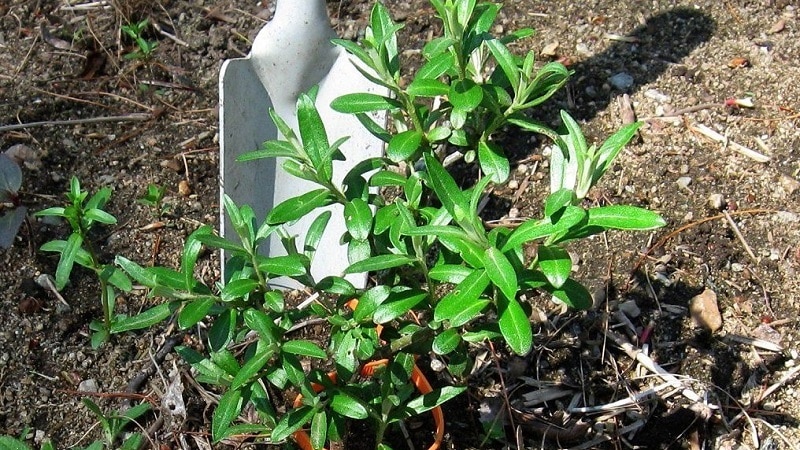
One of the advantages of spring planting is the fact that the likelihood of roots freezing decreases. There are no sudden temperature changes that negatively affect the development of sea buckthorn. In autumn, a young plant may freeze, which will reduce its immunity and productivity.
Attention! If sea buckthorn is planted in the spring, a hole prepared for planting in the fall. During the winter, manure and peat saturate the soil with nutrients, which is beneficial for the young plant.
When to plant sea buckthorn in spring
It is recommended to plant sea buckthorn at the end of March or in April. Summer residents wait until the air temperature warms up to the desired level - +12°C. Some gardeners resort to using the lunar calendar. It helps determine favorable days for planting different crops. It is believed that this way the seedlings receive a program for more active growth and rapid development.
In 2020 it is April 14, 18, 19, 28. However, it is worth remembering that the growth of sea buckthorn is most influenced by compliance with agrotechnical measures during planting and care.
Choosing a landing site
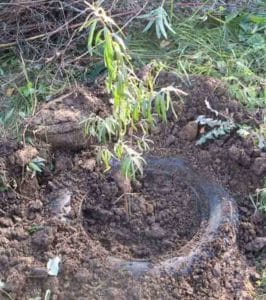
Sea buckthorn is planted along the fence or in the corner of the plot next to the lawn or gazebo. The roots of the tree extend several meters to the sides, so gardeners do not recommend planting other plants at a distance of less than 2 m.
Sea buckthorn prefers light and fertile soils located away from groundwater. Wood cannot withstand stagnant water. The site should be slightly hilly and well lit. Sea buckthorn does not tolerate transplantation, so it is planted immediately in a permanent place.
Preparation of seedlings
Purchase seedlings only from trusted sellers who guarantee the purity and health of the plant. The seedling must have at least 3 skeletal roots, the trunk height is about 50 cm.
When choosing, pay attention to the bark. It should be elastic and smooth, without scratches or other damage. If the bark is brown in several places, it means that the plants froze in winter. Such specimens are not suitable for planting. It is recommended to select small seedlings grown from cuttings.
Attention! To protect seedlings from diseases, before planting, they are soaked for a day in a weak solution of potassium permanganate.And to strengthen the root system, the growth stimulator “Kornevin” is used. This improves the immunity of sea buckthorn and guarantees greater productivity.
Soil preparation
For seedlings, holes are dug with a diameter and depth of 50 cm. To improve the nutritional properties of the soil, add organic matter or mineral fertilizers. One hole requires a bucket of manure, 1 tbsp. wood ash and a handful of double superphosphate. The garden bed should be free of weeds, debris and residues of other plants - this contributes to the development of diseases and the proliferation of insect pests.
If the soil is acidic, sprinkle it with slaked lime - 400 g per 1 square meter. m. After a day, the soil is dug up onto the bayonet of a shovel. If the soil is clayey and heavy, the top layer of soil is mixed with purified river sand or sawdust. This method improves the breathability of the soil and makes it lighter.
How to properly plant sea buckthorn seedlings in spring
The seedlings are placed in the hole, the roots are carefully straightened and the base of the tree is covered with sand, soil and ash. A groove 3-5 cm deep is dug around the plant and watered generously with warm water. About 2 liters are spent on each plant. When replanting, it is important to dig up as many long roots as possible, being careful not to damage them or tangle them.

How to plant a “boy” and a “girl”
To get a good harvest, female and male sea buckthorn seedlings are planted on the site. The plant is wind pollinated, so different species are required for good fruiting. Place the seedlings at a distance of 2.5 m from each other. For one plot, 4 female plants and 1 male plant are enough. The latter can pollinate several specimens at once.
They are arranged in groups or rows depending on the size and shape of the garden plot.If the plant is planted in a group, male sea buckthorn is placed in the center, and female ones around it. If in rows, it is recommended to plant 2 male specimens in one row, followed by 3 female specimens.
Reference. A young male tree is larger than a female one. In adulthood, on the contrary, female specimens are more powerful. The latter have small generative buds, covered with two large scales, and yellow flowers. In male plants, the buds are large and resemble cones in appearance, and the flowers are silver-green.
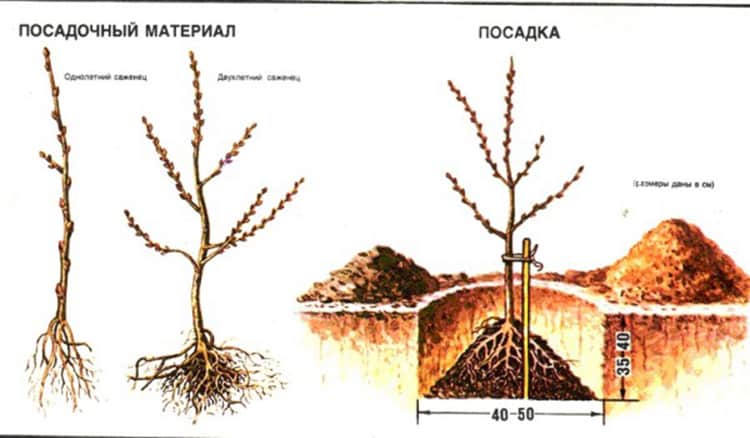
What should grow nearby?
Sea buckthorn is planted at a distance of 2-2.5 m. Suitable neighbors for sea buckthorn are medicinal herbs, for example, chamomile or calendula. Green manures are also planted nearby - plants to normalize the condition of the soil. These include legumes, clover, buckwheat, radish. They fight weeds and pests, do not require special care, and therefore do not cause problems for summer residents.
Attention! It is not recommended to plant other fruit trees and shrubs next to sea buckthorn: pears, apple trees, raspberries, quince, currants, gooseberry. Sea buckthorn does not tolerate close proximity and takes all nutrients from other garden plants.
Nuances of planting depending on the growing region
In the Urals and Siberia, the weather changes quickly; frosts can occur even in mid-spring. Therefore, it is important not to rush into planting, but to wait for stable warmth. If you plant seedlings ahead of time, they will freeze.
To strengthen the plant’s immunity, before planting it is soaked in a growth stimulator. Planted in sandy loam soils, which are fertilized in advance with a solution of chicken manure. This makes the soil more nutritious, which is especially necessary in harsh climatic conditions.For planting, choose soil where the least amount of snow accumulates.
In the Moscow region, sea buckthorn is planted in early April. Before planting, check the soil for acidity and, if necessary, lime it. In the southern regions of the country, planting begins in early March. A mixture of sandy and loamy soils is suitable for sea buckthorn. The soil is regularly loosened and mulched using a thin layer of peat or humus. This will slow down the development of weeds and improve the microflora of the beds.
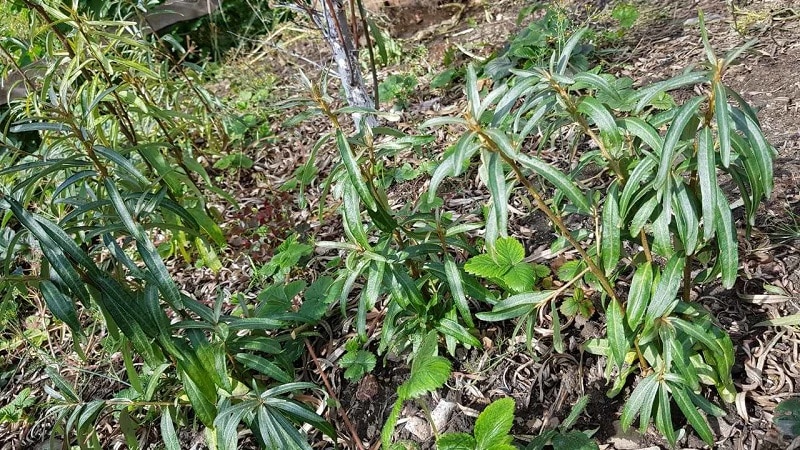
Depending on the type of sea buckthorn
Exist varieties, which are grown primarily for decorative purposes. The berries are yellow, red, and orange. Areas near buildings or fences are allocated for planting. This sea buckthorn serves as a beautiful hedge.
If the plant is planted solely for consumption, the planting location does not matter; most importantly, it should be away from other garden trees and shrubs.
Further care
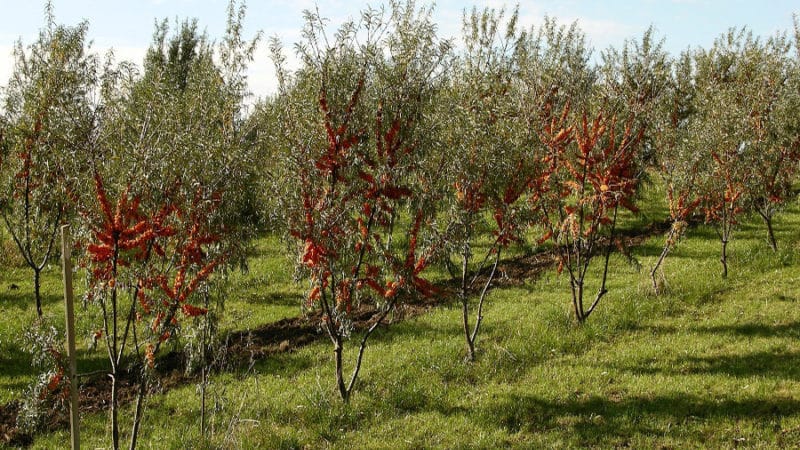
Sea buckthorn does not tolerate drought, so summer residents water the trees once a week. One adult plant requires about 10 liters of water, and a young plant - about 5 liters. Water the tree trunk circle by making a ditch. Stagnation of water should not be allowed, as this will provoke the development of fungal and viral diseases. If the summer turns out to be rainy, the amount of watering is reduced.
Sea buckthorn is fed 3-4 times per season. The first fertilizer requires 10 liters of water and 20 g of ammonium nitrate. Top dressing is applied at the root - about 5 liters. A month later, the soil is fertilized with the following composition: 20 g of potassium sulfate and 50 g of double granular phosphate are diluted in 10 liters of water. Apply at the root in the morning or evening in dry and cloudy weather.Such mineral supplements help the seedling to quickly adapt to climatic conditions and strengthen the immune system. Before each procedure, the soil is loosened to a depth of 10-15 cm, and then watered with warm water.
In the third or fourth year after planting, gardeners trim sea buckthorn - remove dry and old branches that no longer bear fruit. For pruning, use garden shears (secateurs). In addition to its practical function, pruning also has a decorative function: the tree becomes more beautiful and well-groomed, and acquires a shaped crown. Sea buckthorn is pruned in autumn or spring.
Tips and tricks
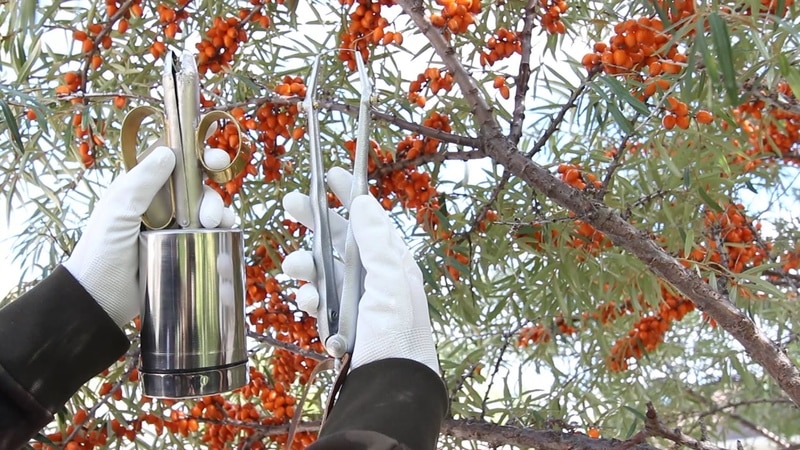
To get a rich harvest, gardeners use varietal sea buckthorn. If you purchase seedlings of unknown origin, they are unlikely to delight you with tasty and juicy berries. When planting, observe the timing and distance, proximity to other garden plants. During cultivation, it is important to regularly water and fertilize sea buckthorn, and trim old branches once a year.
Experienced gardeners recommend regularly treating trees against insects. Sea buckthorn flies, mites, aphids, and leaf rollers may appear on sea buckthorn. To protect the tree, spray it with a solution of karbofos - 20 g per 10 liters of water.
Mistakes to Avoid
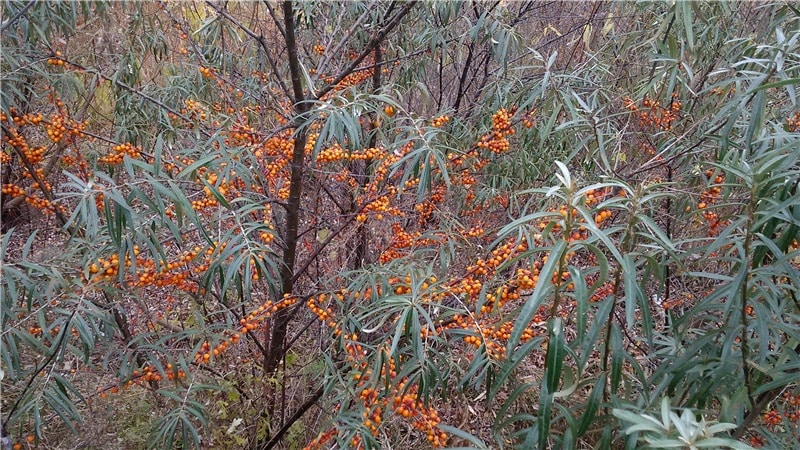
The process of planting and growing sea buckthorn is not much different from growing other garden crops. However, sometimes gardeners make serious mistakes that prevent them from getting a good harvest:
- same-sex seedlings are planted;
- plants are placed at a distance of less than 2 m;
- abuse mineral and organic fertilizers;
- forget about mulching and loosening;
- water with cold water;
- Do not prune old shoots.
A common mistake many novice gardeners make is planting seedlings in shade or partial shade.Sea buckthorn loves the sun. Sometimes gardeners do not have the opportunity to plant 3-5 trees in a sunny area at once, and they choose less lit places. There is no need to do this — it is better to plant one tree each of the male and female gender. Otherwise, the plant will bear fruit poorly, and after a few years it will begin to get sick often.
Conclusion
To grow sea buckthorn, summer residents choose spacious and sunny hilly areas, buy male and female seedlings, and prepare the soil. The plant is planted in a hole 50 cm deep, covered with earth and mulched. Fertilize sea buckthorn once a month with minerals or organic matter. Water once a week - the plant does not tolerate drying out. In order for the tree to bear fruit annually and produce a good harvest, old branches are pruned.
Sea buckthorn is the favorite berry of many gardeners. It is used fresh, for processing or preparing healthy oil.